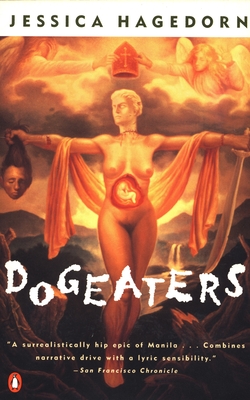Dogeaters
Jessica Hagedorn

From 1990, this is a precursor to a lot of today’s Filipino-American writing. The book follows several different characters in Marcos-era Manila, ranging across the class spectrum. It’s similar in style (as my wife pointed out) to Tommy Orange’s “There There”, following an almost overwhelming number of different characters, whose stories ultimately come together loosely. This approach, while distracting at times, does effectively combat mainstream American culture’s tendency to create a monolithic view of groups of people of color–intentionally showing a wide diversity of individuals. Also much like with Orange’s book, I felt I had favorite characters that I wished I could spend more time with–particularly Rio and her Lola.
While Hagedorn doesn’t shy away from showing the brutal and violent side of the dictatorship, I thought one of the most interesting parts of the book was the way she foregrounded media (TV, movies, and music) and its various roles in the lives of the characters–cultivating certain types of hopes and dreams, cultivating certain standards of beauty, and serving as a contested object that the dictatorship (and Imelda Marcos in particular) used to maintain legitimacy and encourage certain ideas. The passage near the end with a journalist interviewing Imelda Marcos was absolutely my favorite part and was a fascinating portrait of an individual projecting “soft power”–actually in a way that reminded me not a little of Donald Trump.